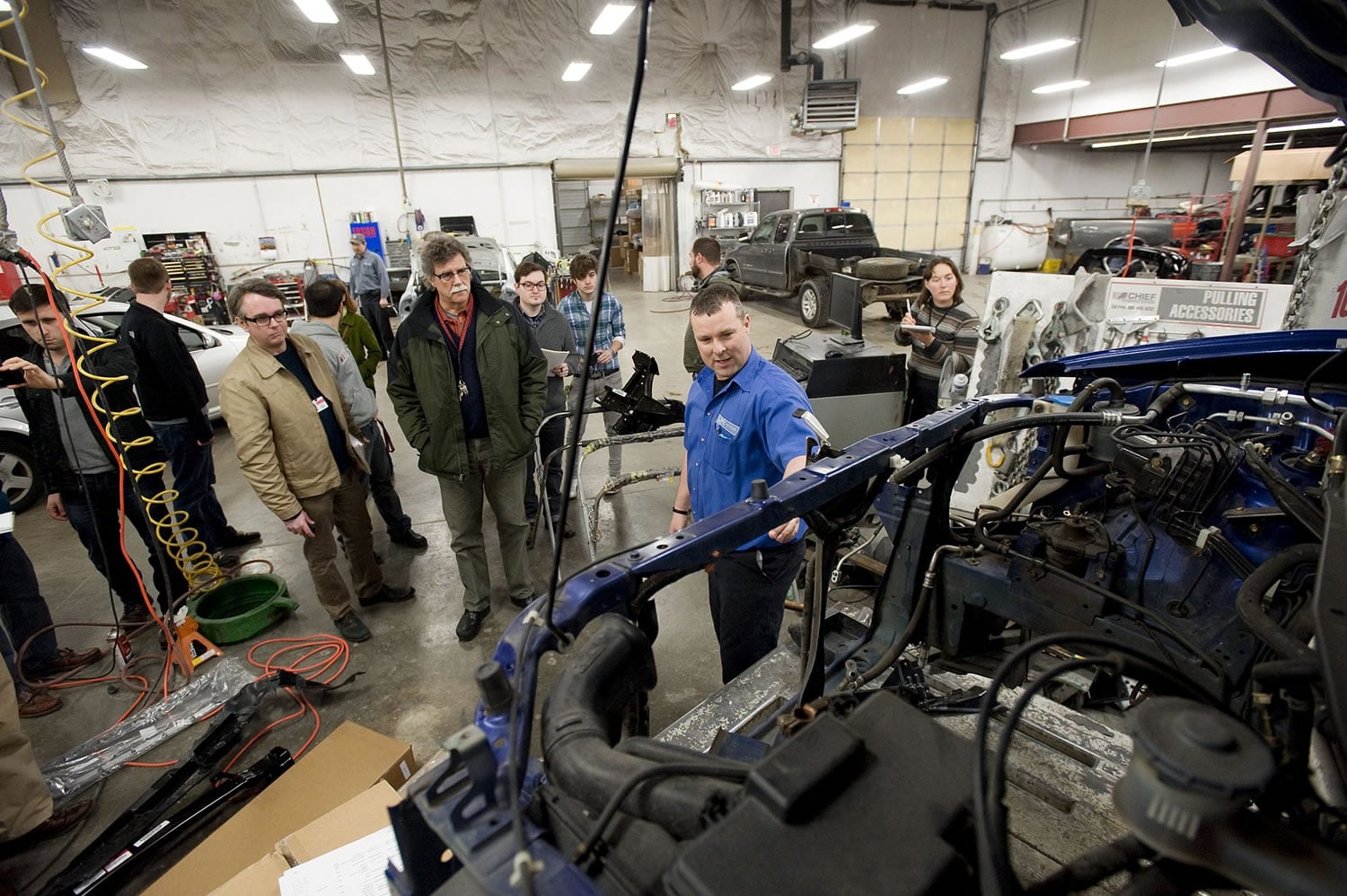WSUV students create OMSI exhibit. An occasional series.
Previously: Shifting into high gear.
Today: Touring a collision shop for inspiration.
Rick Stoker led his dozen visitors through rows of deconstructed cars at Dick Hannah Collision Center. As the center’s director, Stoker was eager to tell stories about the inner workings of automobiles. The visitors were from Washington State University Vancouver and the Oregon Museum of Science and Industry in Portland. Arriving late for their 10:30 a.m. tour, the visitors first huddled with Stoker and Kent VanArnam, Hannah’s marketing director, in a conference room above the adjoining Chrysler dealership at the Vancouver Auto Mall. There, the WSUV students and staff rolled out digital images of their latest ideas for the exhibit on automobile technology they’re creating for OMSI.
The students’ task on this sun-washed Groundhog Day was to record notes and sketches, and snap smartphone photos of cars that could help them develop an OMSI exhibit tentatively named “Autovation.” Their challenge is to draw on the lessons from a gritty body shop to create a museum work of art that will be supplemented by the “augmented reality” of digital technology. They need to have it done before May, when some of them will graduate.
Stoker stopped in front of one car under repair to pick up an exterior door panel, called a skin, from a black Volkswagen Jetta. He showed no sign of strain. Panels like this one, he says, typically weigh just seven to 10 pounds. “They’re just cosmetic,” he says.
But look at what’s hidden beneath the skin, Stoker says, pointing to the exposed door crowded with door- and window-opening mechanisms and a structural beam to protect passengers in a collision. Some car models have door airbags packed into that space, and more are on the way.




